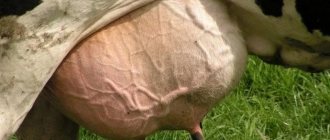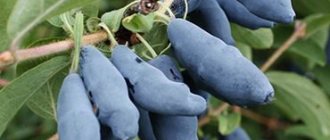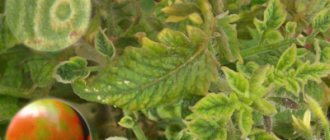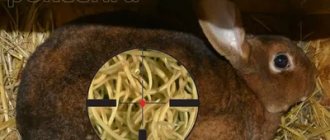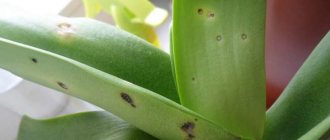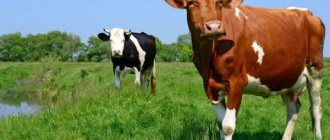Types of pathologies of the cow udder
The mammary glands of cows contain four autonomous lobes. Each has its own nipple with a separate excretory duct. This structure allows milk from one lobe to not mix with liquids from other tanks during the milking process. There are 12 milk passages in each lobe. The voluminous udder is covered with smooth, elastic skin.
Diseases of the mammary glands most often develop during pregnancy and after the cow has calved, when the udder swells from the flow of milk. If even minor changes in the appearance of the organ are detected, treatment must be started immediately, since lack of action can cause a decrease in the productivity of the individual.
Cattle may develop the following mammary gland diseases:
- Edema. This disease develops when the porosity of blood vessels in the mammary glands increases and the removal of blood plasma beyond the boundaries of the vessels. The disease can occur due to impaired metabolic processes, problems with the cardiovascular and renal systems, and intoxication. The pathology is characterized by skin tension, dough-like tissue shape, and a decrease in local temperature in the swollen area.
- Wounds and bruises. Such changes in the udder appear as a result of traumatic effects on the cow’s organ with sharp or blunt objects. This disease can be easily diagnosed. In this case, immediate intervention is required, as there is a risk of mastitis or infection of the body as a whole.
- Mastitis. It is the most common cow udder disease that occurs during lactation. As this pathology progresses, the taste of milk deteriorates and the fat content of the product decreases. If left untreated, this disease is fraught with negative consequences.
- Burns and frostbite of the mammary glands. Such problems are associated with extreme temperatures. The development of frostbite is much more common if animals are kept in inappropriate conditions. For example, if the barn has concrete floors and the bedding is of insufficient size.
- Cystic formations. This disease is characterized by the formation of a cavity deep in the tissues of the udder, surrounded by a capsule and filled with exudate. When palpated, painful lumps can be detected. If the formation reaches large sizes, fluctuations may develop.
The following diseases are also often diagnosed:
- Tumors. The development of various forms of neoplasms is observed. It can be either papilloma, sarcoma or carcinoma. In addition, formations can be malignant or benign. To diagnose pathology, a biopsy and histology of pathological tissues are performed.
- Dermatitis. This disease is characterized by redness of the skin of the mammary glands and the appearance of rashes. It develops under the influence of endogenous factors (metabolic disorders, allergies) or exogenous (if pathogenic microflora enters the body through abrasions, wounds and cracks in the nipples).
- Furunculosis. This disease develops as a consequence of dermatitis, when pyogenic bacteria attach and affect the deep layers of the skin. It is characterized by the formation of numerous small blisters containing pus on the skin.
- Smallpox lesion. It is one of the manifestations of smallpox in cows. With this disease, small nodules appear on the udder, which over time transform into blisters containing exudate. After some time, spontaneous opening of the formations occurs, the skin becomes covered with small ulcers covered with a crust of dried pathological fluid.
- Fungal infection. The main diseases in this group are botryomycosis and actinomycosis. Mares are more susceptible to botryomycosis, and cows are more susceptible to actinomycosis. Although such fungal pathologies can infect various farm animals. Against the background of these diseases, vegetative forms of fungi grow deep in the tissues of the mammary glands. They are characterized by the formation of purulent inflammation, accompanied by tissue necrosis in the affected area. Over time, a granuloma develops, which, after spontaneous opening, transforms into a fistula. Fistulas due to fungal diseases of the mammary glands do not heal for a long time, and periodic discharge of pus is noted.
- The nipple canal is missing and overgrown. The first type is a disease that develops during intrauterine development. The second stage can develop as a complication of mastitis, a tumor, or as a result of an injury. Sometimes a cow is culled because of this, but there are treatment methods that help restore the patency of the teat - these are puncture and drainage.
- Stenosis of the passage in the nipple. The reason for the development of such a disease is associated with the formation of scar tissue after an injury; it can also occur as a complication of a disease such as mammary muscle hypertrophy. This disease is also called stiffness. Also, such a pathology can manifest itself due to improper milking equipment. Constant retention of milk in the milk lobes is fraught with the development of mastitis. There are several operational techniques that help cope with this problem.
- Milk incontinence (lactororrhea). The reason for its development is insufficiency of the mammary muscle. Characterized by the occurrence of spontaneous leakage of milk. Most often, to eliminate the problem, a purse string suture is placed near the tip of the nipple. In addition to surgical treatment, you need to regularly massage the muscle area with light movements; this often helps restore sphincter function.
Stiffness and fusion of the nipple canal
Tightness in cows develops due to a narrowing of the opening of the teat caused by an increase or contraction of its circular muscle (sphincter). Inflammation or wounds of the mucous membrane also provoke inflammation of the udder nipple (tears during rough milking, careless insertion of a catheter into the nipple). In this case, tissue scarring occurs in the nipple canal or at its tip. Also, the cause of the narrowing of the canal may be a neoplasm.
What does narrowing look like? When milking, milk comes out of the nipple under great pressure, but still in a thin stream. In case of obstruction of the canal, milk is not released at all. Along the nipple canal or at its base and in the cistern, dense formations in the form of a cord, peas, stripes or scars are felt. The milk catheter is passed through the channel with difficulty or gets stuck in the area of greatest narrowing, blockage, or fusion.
In severe cases of blockage, hot baths are used on the nipples. The affected nipple must be lubricated with ichthyol or camphor ointment, followed by warm wrapping and milking through a catheter. In case of chronic narrowing of the canal, the veterinarian widens it promptly.
Treatment methods for various diseases
Therapeutic actions when sores are detected on the udder of cows depend on the type of disease.
For mastitis
Initially, the stage of the disease must be determined. The last two involve complex therapy using antibiotics and massage. For a speedy recovery, a good and balanced diet plays an important role.
At an early stage of development, the disease can be cured through massage. It's quite simple to do. You just need to massage the affected area using light movements. Thanks to such actions, the seals dissolve and inflammation is relieved.
This disease often develops if the barn where the individual is kept is damp and cold. Therefore, such errors need to be corrected.
For swelling
The occurrence of such a pathology is due to serious disturbances in the cow’s circulatory system. The tendency to this disease is more pronounced in pregnant cows and calving cows. The disease can be cured, the main thing is to detect it in a timely manner. In some cases, it disappears after some time without outside intervention.
Therapeutic actions for udder swelling include eliminating salt and solid food from the diet, and the animal should be fed hay, fruits and vegetables. A sick cow needs to go for a walk every day. You should also reduce the amount of liquid consumed. If there is no result, antibiotic therapy is prescribed.
For bruises
For cows living in a herd, bruises are a common occurrence. Sometimes animals can injure their mammary glands and hurt themselves in the barn if there are unnecessary objects there. When the injury is minor, after some time the bruise resolves on its own.
Important! A strong blow is characterized by the appearance of hematomas, as well as the formation of clots and lumps in the milk. In this case, the cow’s temperature rises and an inflammatory process develops.
In this case, you should initially apply a cold compress to the affected area. And then treat the area of hematoma formation using a clay mash. As an additional treatment method, 10 percent gluconate or calcium chloride is injected intramuscularly.
For bites
On pasture, cows often suffer from insect or snake bites. This can happen when eating grass, where all kinds of parasites live.
When bitten by a wasp, gadfly, tick or mosquito, the affected area on the mammary glands will become slightly swollen. The affected nipples are covered with knobby swellings at the ends. Snake bites manifest themselves in a similar way. The scratched bite site should be treated with a disinfectant solution. For therapeutic purposes, when the udder is bitten, zinc ointment or other drugs with a similar effect are used. For preventive purposes, the affected area is lubricated with Vaseline.
But all of the above measures will not bring results if the insect becomes infected. This can cause the cow to develop furunculosis, inflammation of the lymph nodes, etc. In this case, you should definitely seek help from a veterinarian.
For furunculosis
With this disease, the nipples, mammary glands and hair follicles of the skin become inflamed. Pathology develops when animals are kept in unsanitary conditions. Often the formation of the disease occurs during lactation.
Therapeutic actions should be carried out exclusively on the affected area. First, you should cut off all the hair, then treat cracks and wounds with antiseptics and anti-inflammatory agents. You can also use ichthyol ointment or iodine. Then the abscesses are opened, followed by treatment with penicillin. Treatment must be continued until the individual is completely cured. You can understand that furunculosis has been cured by the appearance of the mammary glands - there will be no wounds or cracks left.
For papillomatosis
Some livestock breeders do not particularly pay attention to such neoplasms on the cow’s mammary glands, because the behavioral characteristics of the animal do not change. You can notice a papilloma or wart only during the milking process. Such tumors form not only on the udder itself, but also on the nipples. This disease indicates an infection of the body, which should be eliminated as quickly as possible.
The mammary glands can be affected by papillomatosis if there were previously wounds and cracks in the skin. Often this phenomenon occurs after calving, for this reason it is necessary to inspect the udder, and if necessary, treat it with a rich moisturizer.
In some cases, the papilloma may disappear on its own, although this does not mean that the cow does not need treatment. For this disease, therapy with antiviral and immunomodulatory agents is prescribed.
For cracks
If handled carelessly during milking or due to touching plants or thorny bushes, small cracks may form on the animal's mammary glands. If treatment is not started in a timely manner, there is a risk of developing mastitis, and the likelihood of infection of the body also increases.
Damaged areas should be lubricated with a rich cream. Calendula ointment helps a lot in such a situation. Another method of treatment is to wash the udder with a warm saline solution, followed by treatment with streptocidal ointment after the skin has dried.
For smallpox
This disease is characterized by fever, inflammation of the lymph nodes and general malaise. There is also a decrease in milk production.
After some time, the disease can disappear without outside help, but over time you can notice the re-development of the disease. Such an animal requires professional therapy.
If smallpox occurs against the background of other diseases, it becomes more serious. The carriers of the infection are domestic animals and rodents. For this reason, the cow must be isolated during therapy. Treatment must be prescribed by a veterinarian. For preventive purposes, it is recommended to immunize cattle against smallpox. Upon completion of therapy, all debris should be removed from the barn, all existing cracks should be closed to prevent rodents from entering the stalls, and cleanliness should be monitored.
For lactorrhea
This disease is associated with weakness of the canal located in the nipple. Accompanied by involuntary release of milk. Milk incontinence can develop due to hypothermia, colds, being in a barn where there is a draft or the temperature regime is not maintained.
Important! For therapeutic purposes, the surface of the nipple is treated with a special product - Collodion.
To stimulate the muscles, the nipples are tightened with rubber rings, but not too tightly. Each time after milking, an udder massage is performed.
Milk incontinence
The opposite situation also happens - spontaneous release of milk from a cow. During the treatment of the udder before milking, the cow produces milk in drops or even streams. The cause of this disease is relaxation or paralysis of the sphincter that closes the nipple canal. This often happens due to injury, inflammation, or a disorder of the nervous system.
In case of incontinence, it is useful to treat the udder nipples after milking with special preparations that help close the nipple opening. Such cows should be milked more often. Regular massage of the tips of the nipples after milking for 10-15 minutes helps.
Preventive actions
To prevent the development of mammary gland diseases in cattle, the farmer must strictly adhere to certain livestock management requirements.
Preventing the development of mastitis in a cow is one of the most important tasks in the daily work of a veterinarian and livestock specialist. It is worth considering that only systematic and persistent implementation of complex measures can achieve a significant reduction and sometimes complete elimination of factors contributing to the occurrence of udder diseases in cattle, which in turn allows increasing milk yield, as well as preventing infection of calves through the milk of a sick cow.
The mammary glands in cows are a sensitive organ that requires special care. If you take good care, milk correctly and comply with all sanitary standards, you can prevent the development of any pathologies and the cow, as well as increase milk productivity.
Milk retention
Sometimes a cow's milk simply stops flowing, even though her udder is full. The reasons for this phenomenon, if there are no other symptoms, can be purely psychological. Rough handling of a cow, a change in milkmaid, or other factors that cause stress can cause a reflexive cessation of milk production.
If a similar misfortune befalls your little cow or parsley, the only way out is to improve the conditions for handling the animal. During milking it is useful to give the cow her favorite food. Milk should be given very carefully so that the animal does not worry.
Furunculosis in a cow
Furunculosis is characterized by purulent inflammation of the nipple, glands, and hair follicles of the skin. It mainly occurs due to poor hygiene. Furunculosis of the nipple occurs in most cases in cows during lactation. Symptoms of furunculosis can be noticed during milking. There are inflammations on the skin of the nipples containing a hair root in the center. The area where the skin is inflamed becomes yellow or reddish. Furunculosis is recommended to be treated exactly in the area where it formed. The hair needs to be cut at the beginning and end of its growth.
If wounds have formed on the skin of the nipples, they need to be treated with anti-inflammatory and disinfectant solutions. You can treat the skin with iodine solution or ichthyol ointment. The abscesses are opened and treated using penicillin until complete recovery. When the furunculosis passes, there should be no wounds or inflammation on the skin. As a preventive measure, hygiene should be observed. Animals should be washed thoroughly and the udder should be treated with warm water. After the cow has emptied, the floor must be washed using disinfectants.
foot and mouth disease
A highly contagious disease that affects all mammals. It is characterized by fever and aphthae on the mucous membranes, udder skin, and in the interhoof gap.
Causes and symptoms
The causes of infection are the appearance of a sick cow in the herd or the introduction of the virus on the shoes or clothing of staff. Symptoms of foot and mouth disease are most pronounced in adult cows:
- decreased appetite;
- decrease in milk yield;
- increase in body temperature to 40-41 ° C;
- the appearance of aft.
Aphthae rupture after 12-48 hours, forming painful ulcers with ragged edges and a reddish bottom. The temperature at this point drops to normal. There is profuse drooling and lameness. After a week, the erosions heal.
With a benign course, the cow recovers after 2-3 weeks. If a complication occurs due to a secondary infection, mastitis and pododermatitis develop. With a malignant course, the cow dies after 1-2 weeks.
Treatment methods
Sick cows are transferred to a separate room and given a course of immunostimulating drugs. The mouth is washed with antiseptic drugs. The affected areas of the udder and legs are treated surgically and antibiotics, antiseptic ointments and painkillers are applied externally.
Bruises
A lump cannot appear on a soft udder, but a bruise can easily appear. Usually, a cow gets bruises to her udder when she is kept too crowded. When there is a conflict between cows, one may hit the other. Fresh bruises are painful and the cow may resist milking.
Treatment is limited to cold compresses for the first two days and warm compresses for the next two days. If dense areas and blood appear in the milk, you should consult a specialist. There is a very high probability that the bruise has turned into inflammation.
Cracks
The appearance of small cracks on a cow's udder is a consequence of careless handling during milking or a consequence of touching grass or thorny bushes.
At an advanced stage, mastitis develops. Cracks increase the risk of contracting various infections.
The affected areas are lubricated with a rich cream. Calendula ointment helps in this case. The second option is to wash the udder with warm saline solution, then after drying, lubricate it with streptocidal ointment.
():
After hypothermia, chapping of a wet udder, or due to unsanitary conditions in the barn, udder dermatitis can be observed. Often the disease occurs due to metabolic disorders or feed intoxication.
Papillomatosis
Many breeders do not attach much importance to such neoplasms on the animal’s udder; besides, it behaves normally and does not cause concern. You can detect papillomas and warts only during milking. They appear on both the udder and teats. The growths come in different sizes and shapes.
Such neoplasms signal the presence of an infection in the body, which should be treated as soon as possible.
The udder lobe may be affected by papillomatosis due to previously formed wounds and cracks. They often appear after calving, so the udder should be examined and, if necessary, lubricated with a rich moisturizer.
Sometimes warts and papillomas go away on their own, but this does not mean that the animal does not need to be treated. There is a whole line of antiviral and immunomodulatory drugs for this case.
Smallpox
The causative agent of smallpox is a viral infection that manifests itself on the surface of the udder in the form of pustules, ulcers and rashes. It can also appear on other parts of the body - torso, legs, head.
With this disease, the temperature rises, the lymph nodes become inflamed and general malaise appears. The amount of milk decreases.
After some time, smallpox may go away on its own, but after a certain period of time a second outbreak will begin. Such an animal requires professional treatment.
Other sores in a cow are provocateurs for the transition of smallpox to a more severe form. The carriers of the disease are pets and rodents. Therefore, the cow is quarantined during the treatment period. Treatment is prescribed by a veterinarian. As a preventative measure, it is worthwhile to vaccinate cattle against smallpox. After treating the disease, the room should be cleared of all debris, all holes should be sealed to prevent rodents from entering the barn, and try to maintain cleanliness.
Edema
Swelling on the udder is called congestive edema. This disease occurs due to serious disturbances in the animal’s circulatory system. Pregnant cows and those after calving are most susceptible to this disease.
The swelling causes intense blood flow to the inflamed lobe of the udder. You can identify this disease by swollen nipples during milking. The tumor then spreads to the vulva area.
Symptoms of swelling are different:
- the skin at the site of swelling noticeably becomes dense and thickened;
- The volume of milk yield does not change, but the fat content of the milk decreases - it becomes more watery.
This disease is treatable, the main thing is to identify it in time. Sometimes it goes away on its own after a couple of weeks.
